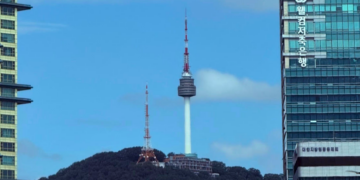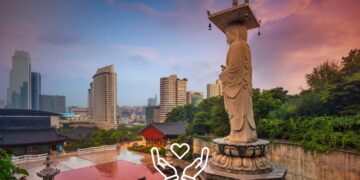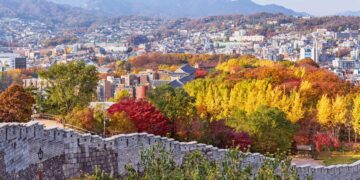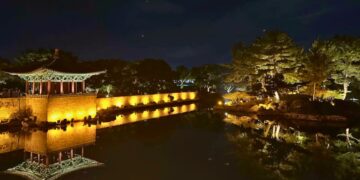Last Updated on 11 months by admin
Celebrate the Year of the Blue Snake with a these interesting snake-themed destinations in Korea, from parks to hiking trails steeped in legends.
The Year of the Blue Snake, according to the Korean zodiac, symbolizes wisdom, transformation, and renewal. Snake is the sixth sign among the zodiac and is a symbol for revival, improvements, and new beginnings. And what better way to celebrate the year than by exploring fascinating snake-themed destinations in Korea? Did you know that Korea has 208 regions named after the legless creature?Whether you’re a folklore buff, a cultural symbol enthusiast, or a nature lover, these one-of-a-kind spots in Korea are the perfect blend of tradition and adventure.
From famous temples to breathtaking hiking trails, let’s discover the best snake-themed travel destinations to celebrate the Year of the Blue Snake in Korea.
Snake-Themed Destinations in Korea
Snake Couple at World Cup Park
World Cup Park in Seoul has been making giant sculptures of the zodiac animal from the year’s sign every year since 2018.
This year, there’s a husband and wife snake in the park, representing the Year of the Blue Snake. Interestingly, the snakes are shaped in the number ‘2025,’ the current year. There’s about 4 tons of silver grass in making of these snakes. The harmonious couple of snakes are large – 3.5 meters high and 4 meters long. There are also four eggs to represent their family which are 1 meter high and 1.5 meter long.
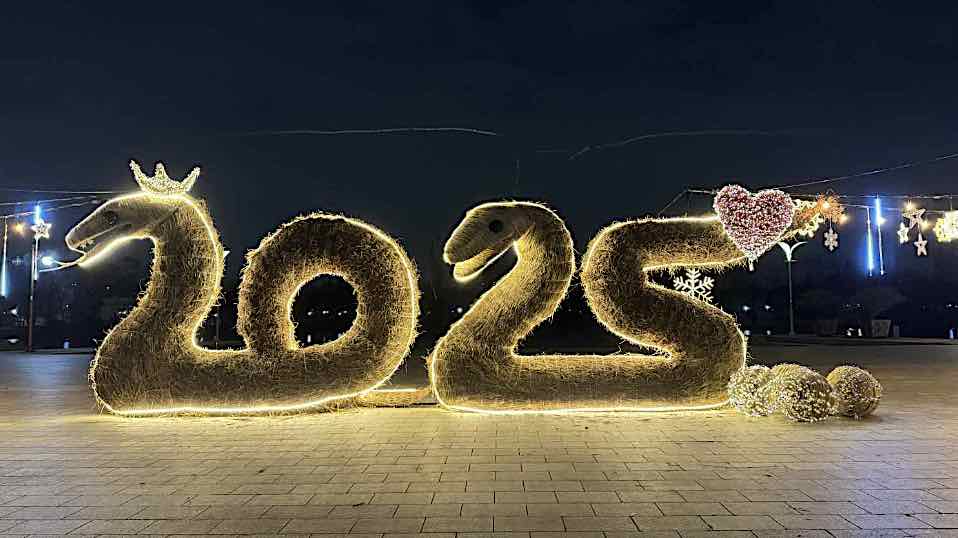
During the night time, snakes light up with LEDs and surrounding area also has some more lights in shape of snowflakes, stars and waterdrops. The lighting is on from 5 pm to 11 pm every day. The park also has a wish tree where you can write down your wishes and hang them. During the Korean New Year, Seollal, on January 29th, you can play traditional Korean games like throwing rings and playing “yut” (a traditional Korean board game) in the park. No reservation is needed to enjoy these.
Hiking at Baemsagol Valley in Jirisan National Park, Namwon
Baemsagol Valley at the foot of Mount Jiri in Namwon is the Korea’s most popular destination associated with snakes. There are local legends of guardian snakes protecting the mountain. The valley looks like a large snake, over 9 kilometers long, crawling out of the mountain. There are many other smaller snakes or “baem” in Korean, and hence the name of the valley.
The valley stretches from Banyabong Peak and Tokkibong Peak and is popular for its seasonal charm. During spring, the valley blooms with azalea flowers while autumn sees gorgeous burnt orange hues all around. There’re also many other sights – more than 100 large waterfalls, smaller streams, sitting spaces in form of wide rocks and so much more.
Cheongsapo Observatory in Busan
Busan’s Cheongsapo is a quaint little seaside town famous for its lighthouses and delicious seafood restaurants. The town name means “blue sand dune,” but it actually comes from “blue snake,” according to local legends. Here’s the story: A long time ago, there was a loving couple here who cared for each other deeply. One day, the husband went out to sea to catch fish and sadly passed away in an accident. The wife climbed a pine tree in the village every day and waited for him, hoping he’d come back soon. The dragon king of the ocean was impressed by her unwavering devotion and sent a blue snake that led her to the water channel that led to her husband.
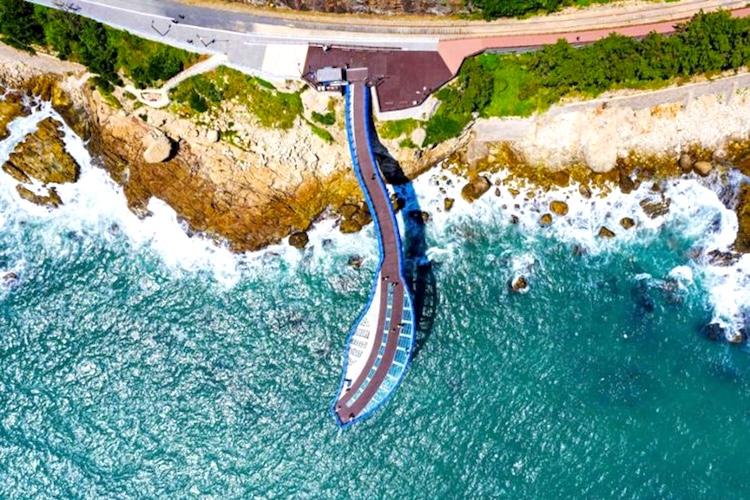
The Cheongsapo bridge observatory is also shaped like a snake and gives you a gorgeous view of the Cheongsapo seaside. There are many coffee shops in small alleys of the town, making a perfect place to chill and relax.
Camellia trail at Tongyeong’s Jangsa Island
Jangsa Island of Tongyeong in South Gyeongsang Province has a very unique shape – a snake. Thus, the island gets its name which means “long snake” in Chinese characters. This little island is about 1 kilometer west of the Geoje Island. It falls under the range of the Hallyeohaesang National Park.
Jangsa Island is home to more than 100,000 camellias and silver magnolias. There are many other native flowers and plants like fairy pitta, sickle neofinetia and seongnan orchids on the island. With over 200 flower varieties and 1,000s of plants, the island is blooming throughout the year.
There’s even a trail shaped like a coiled-up snake in the Jangsado Sea Park. It goes up and down the hill giving tourists a panoramic view of the island. At the top, you can also see the neighboring islands.
Related Posts
1,839 total views, 5 views today



